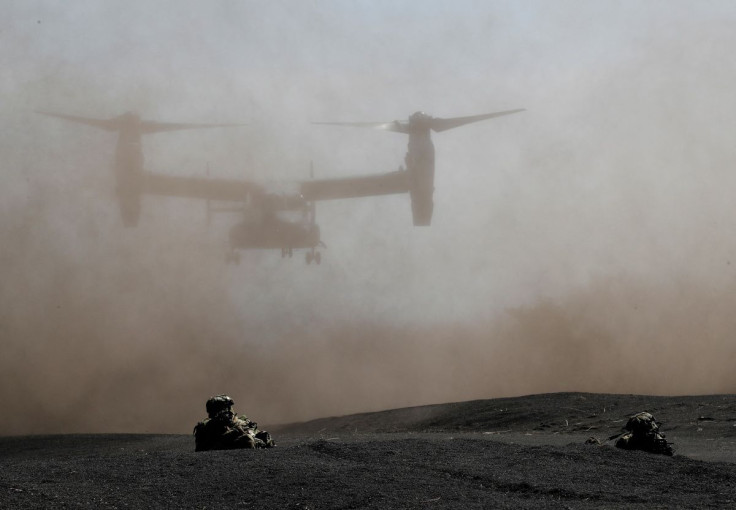Japan, US Military Plotting To Set Up Ballistic Missiles On Japanese Islands, Says China
KEY POINTS
- The move is aimed at setting up an "integrated deterrence" against China
- The Kishida administration has not yet given the nod for the same
- Chinese military analysts said the move could pose a major security risk
Japan's Self-Defense Forces are colluding with the U.S. military to help the latter deploy mid-range ballistic missiles on the former's southwest islands to deter China, a report that appeared in Chinese state-backed media claimed.
The "conspiracy" is intended to achieve "integrated deterrence" against China by strengthening the construction of the "first Island chain," said an exclusive report in Global Times.
The report, quoting unnamed sources, said Japanese forces and the U.S. military have been pressuring the Kishida administration since 2021 to cooperate with Washington's plans for the missile deployment. Besides, the U.S. has also started the assembly of ground-based intermediate-range missiles of its Multi-Domain Task Force (MDTF), prioritizing its deployment in the "first island chain."
The MDTF, unlike the THAAD anti-missile system, does not need a huge infrastructure at the site, and can be assembled in other places and quickly stationed in U.S.-Japan military bases.
However, the Kishida administration has not yet given the nod for the deployment of the missiles, but the forces have started the preparations for the same, the Chinese media report said. Last year, the U.S. Indo-Pacific Commander Admiral, John Aquilino, inspected the preparations for the military bases in Japan's southwest islands. He was then accompanied by Koji Yamazaki, Chief of the Joint Staff of Japan's Self-Defense Forces.
Two months later, Tokyo and Washington made a joint statement regarding gradually enhancing the share of military facilities on Japan's southwest islands.
Meanwhile, military analysts said the move could pose a major security risk to the Asia-Pacific region. Song Zhongping, a Chinese military expert, told the Global Times the deployment of land-based mid-range missiles in Japan's southwest islands would seriously threaten China's national security. According to him, this would allow the U.S. to become more involved in China's surrounding areas.
"Once the missiles become a regular weapon, they will inevitably lead to an arms race, which is not conducive to peace and stability in the Asia-Pacific region," added Song.
The report also quoted him highlighting the detrimental effect the move would have on Sino-Japanese relations. Song added Japan's "dangerous plot" was in total disregard to the security of the Asia-Pacific region. He said this will seriously threaten the normal development of China-Japan relations and cause severe damage to regional peace and security.
"This is a dangerous and malicious move and, if not reined in before it's too late, there will be endless troubles," Song warned.

© Copyright IBTimes 2025. All rights reserved.





















